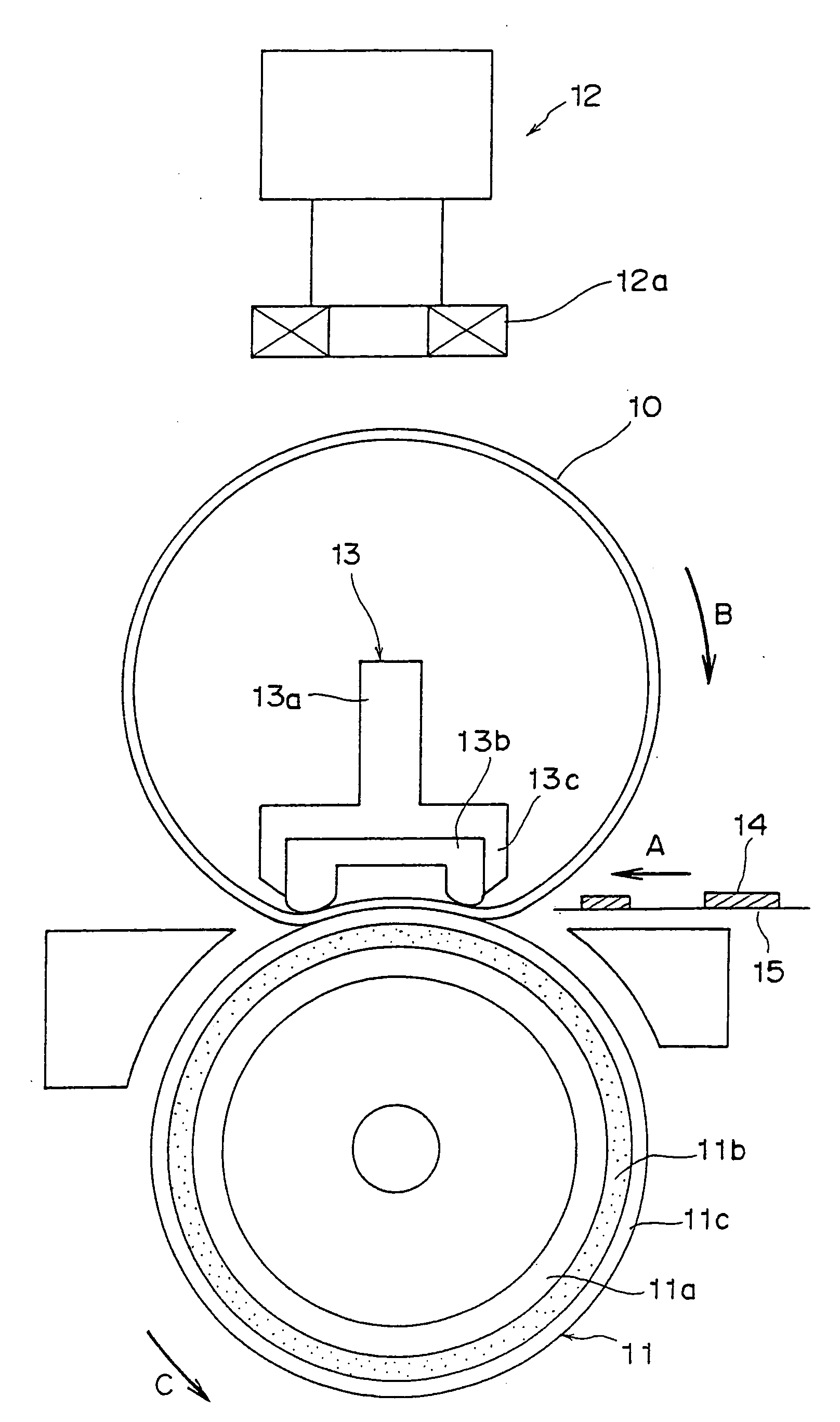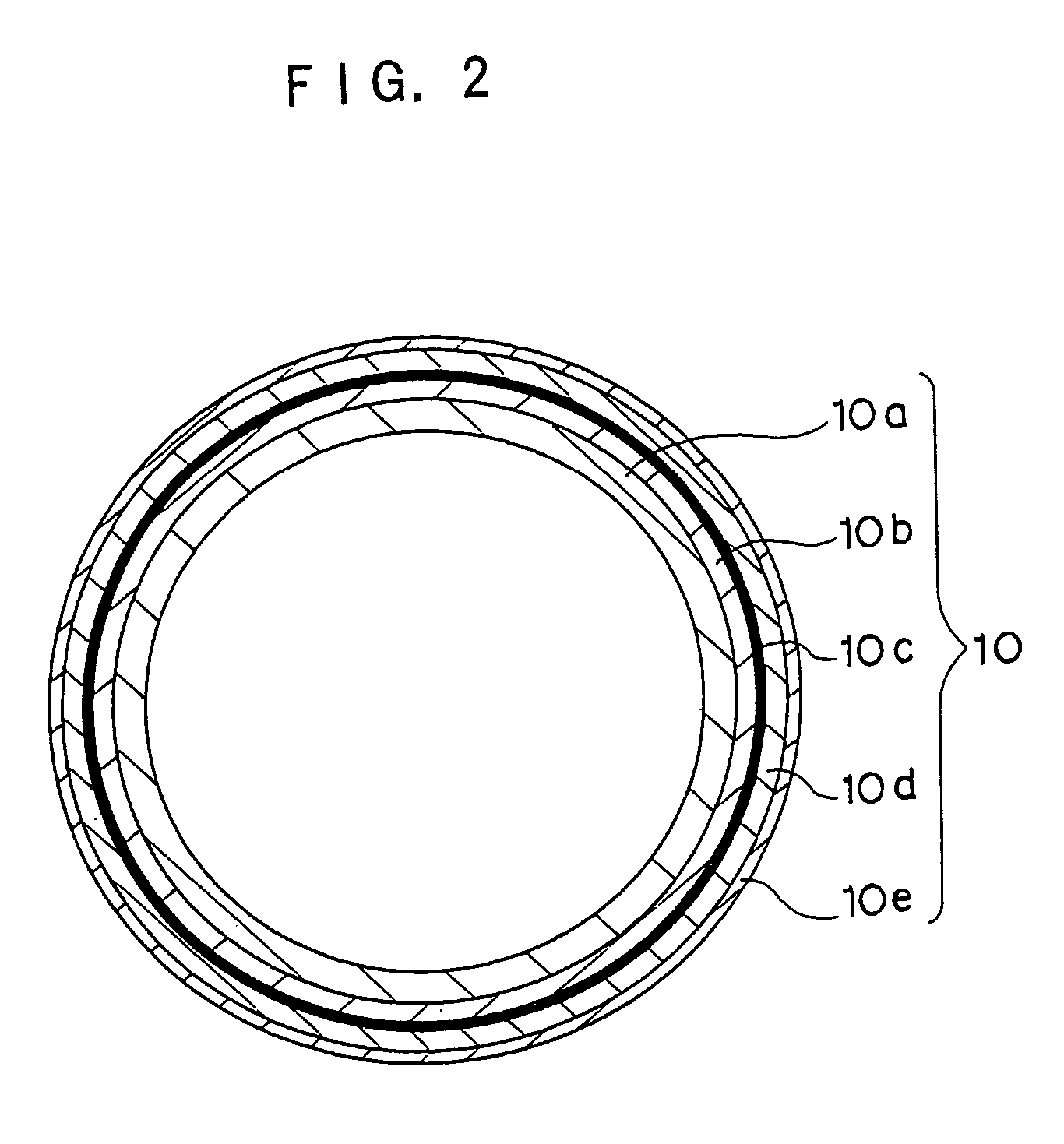Fixing member, fixing device and image forming device
a fixing device and fixing member technology, applied in the direction of instruments, electrographic process devices, optics, etc., can solve the problems of increasing power consumption, not meeting the recent demand for energy-efficient machines, and wasting time on heating the surface of the roll to be heated, so as to improve the efficiency of the heating process and reduce the cost of operation. , the effect of preventing damage to the pressure applying member
- Summary
- Abstract
- Description
- Claims
- Application Information
AI Technical Summary
Benefits of technology
Problems solved by technology
Method used
Image
Examples
examples
[0154] Hereinafter, Examples of the invention will be explained below. However, methods for preparing a fixing belt of the invention used in the examples are not limited to the following examples.
example a
Examples 1-3, Comparative Example 1
Preparation of Fixing Belt
[0155] An endless belt having a film thickness of 60 μm and an outer diameter of 30 mm is prepared using a polyimide resin (trade name: U varnish-S, manufactured by Ube Kosan, Co., Ltd.) As a material of heat resistant resin layer. Next, the outer peripheral surface of this endless belt is subjected to an alkali etching treatment and washing, and the outer peripheral surface of the belt is subjected to an electroless nickel plating to form a nickel layer having a thickness of 0.5 μm. Next, by using the electroless nickel plated layer as an electrode, a copper layer (inner peripheral side metal layer) having a layer thickness of 10 μm is formed on the nickel plated layer by an electroplating treatment. As the electroplating conditions, a plating liquid containing copper sulfate (70 g / L), sulfuric acid (200 g / L), and hydrochloric acid (50 mg / L), is used and the current density is made to 0.2 A / dm2.
[0156] Thereafter, a ni...
example b
Examples 1-3, Comparative Example 1
Preparation of Fixing Belt
[0182] An endless belt having a film thickness of 60 μm and an outer diameter of 30 mm is prepared using a polyimide resin (trade name: U varnish-S, manufactured by Ube Kosan, Co., Ltd.) as a material of heat resistant resin layer. Next, the outer peripheral surface of this endless belt is subjected to an alkali etching treatment and washing, and the outer peripheral surface of the belt is subjected to an electroless nickel plating to form a nickel layer having a thickness of 0.5 μm. Next, by using the electroless nickel plated layer as an electrode, a copper layer (inner peripheral side metal layer) having a layer thickness of 10 μm is formed on the nickel plated layer by an electroplating treatment. The composition of the copper electroplating liquid is shown in Table 8 below.
[0183] Here, four samples having different internal stresses are prepared by adjusting the current density, and changing the kinds and addition...
PUM
 Login to View More
Login to View More Abstract
Description
Claims
Application Information
 Login to View More
Login to View More - R&D
- Intellectual Property
- Life Sciences
- Materials
- Tech Scout
- Unparalleled Data Quality
- Higher Quality Content
- 60% Fewer Hallucinations
Browse by: Latest US Patents, China's latest patents, Technical Efficacy Thesaurus, Application Domain, Technology Topic, Popular Technical Reports.
© 2025 PatSnap. All rights reserved.Legal|Privacy policy|Modern Slavery Act Transparency Statement|Sitemap|About US| Contact US: help@patsnap.com



